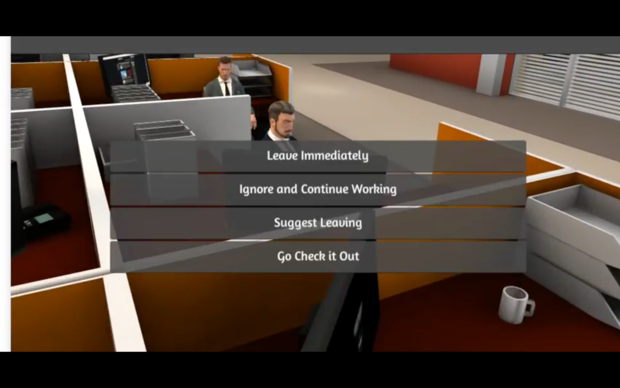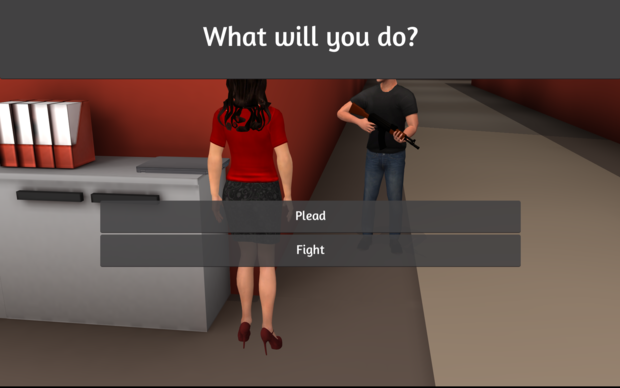Can companies train workers to survive shooters?
Paul Burt, who runs an employee benefits consulting firm, was on the phone with the vice president of a hospital when she blurted out: "There's an emergency. I have to go." Then, ominously, the line went dead.
Worried about layoffs, a 50-year-old pharmacy worker had walked into the hospital with a gun and killed two of his managers before taking his own life. Burt's business contact was among those who survived the shooting.
"I could imagine how they felt, running for cover, all the while trying to protect their patients," recalled Burt, who said it was his introduction to an "active shooter" scenario, something now all too familiar to Americans.
Burt decided to create a training program to sell as an employee benefit for businesses ranging from hospitals to malls -- all places where the public comes through the door each day. The goal is to help employees gain the mental and emotional tools they would need to react, not freeze, in an active shooter scenario.
Burt's program reflects another aspect to violence in the workplace: it's become so common that there's a glut of tutorials and training programs for surviving an active shooter situation. His program follows the guidance offered by the U.S. Department of Homeland Security on active shooter preparedness, and shares some similarities with the ALICE Training Institute's training program, which stresses taking actions to avoid encountering a shooter.
Burt designed the program with Michael Crane, a former Chicago police officer and a member of the FBI's Critical Response Group for Workplace Violence, and Jo Ann Ugolini, who has worked for two decades in the threat assessment field. Their 20-minute interactive online training program teaches people confronted with a shooter how to be more aware of their surroundings, more self-reliant and, if necessary, to take action.
This visual tutorial relies on an ominous black-and-gray screen with a no-nonsense voice telling viewers that they are "engaged in a scenario" and have to respond. The program evaluates their choices as they confront an active shooter with a semi-automatic rifle.
Viewers must make rapid and tough decisions as gunshots and sirens blare in the background. In one scene, the viewer is positioned under her desk, with the shooter looming above.
The tutorial follows the advice of the U.S. Department of Homeland Security. The first choice is to run; the second, hide; and the third is to fight back with whatever you have. The program also advises the viewer to plan ahead for alternate escape routes and to avoid being knocked down if a panicked crowd heads in the same direction.
If you choose to hide, you're instructed to turn off your cell phone because the ringer could give away your location. The program advises workers to avoid freezing or pleading for your life. Instead, it's stressed that workers should act before the assailant can react.
The program, which doesn't yet have clients, will be sold to WL Benefits Group's current customers for a licensing fee of $2 to $4 a month per employee. Burt hopes employers would make the training program mandatory for new hires.
Upgrades will be included in the monthly rate and offer customized versions including specific floor plans of the businesses that purchase the program. The company plans to create a Google Cardboard virtual reality viewer to depict offices realistically.
"You'll swear you're in that room," said Burt.
He emphasized that training should go beyond the product, including finding ways to help workers who could be at risk of becoming an active shooter before a crisis escalates.
"We need to address the underlying issue of mental health," said Burt. "We can't dismiss employees as being crazy or wacko. We need to provide help if this problem is ever going to de-escalate."





